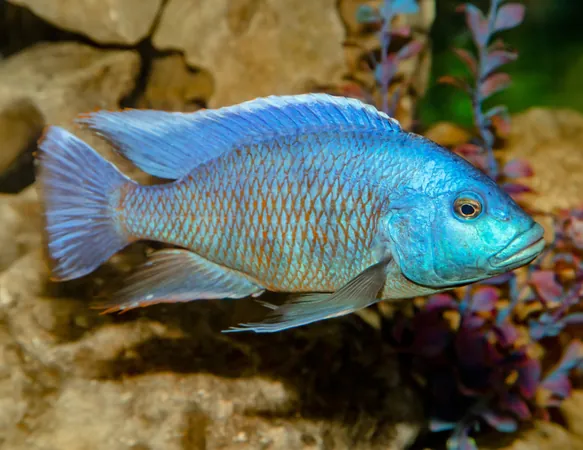
Unlocking the Secret to Rapid Evolution: Scientists Discover Fish Supergenes
2025-06-13
Author: Wei
The Evolutionary Marvel of Lake Malawi's Fish
In the stunning depths of Lake Malawi, a single group of fish has astoundingly diversified into over 800 species within just a few million years. This rapid evolution has baffled scientists, but recent discoveries are shedding light on this extraordinary phenomenon.
How DNA Flips the Script on Evolution
Researchers from the Universities of Cambridge and Antwerp have identified a remarkable genetic mechanism that fuels this explosive biodiversity. Their groundbreaking study reveals that specific segments of DNA in cichlid fish, known as chromosomal inversions, act as evolutionary accelerators, preserving vital genetic traits across generations.
These flipped DNA sections ensure that fish can adapt rapidly to new environments, enabling the swift emergence of new species. This process challenges long-held beliefs about how species evolve and thrive.
The Toolbox of Evolution: What Are Supergenes?
Ever pondered why our planet supports such an array of life forms? The answer lies in the rich history of these cichlids. Despite sharing a common ancestor, they have evolved into diverse forms — from algae-grazers to open-water hunters — all within the same lake.
In their study, scientists analyzed genomes from over 1,300 cichlid fish and uncovered that several species possess extensive segments of flipped DNA on five chromosomes. These chromosomal inversions block the usual genetic shuffling that occurs during reproduction, allowing advantageous traits to stay together and be passed down intact to offspring.
Described as a toolbox where all the most useful tools are bundled, these supergenes help the fish adapt to various environments, maintaining unique adaptations despite lacking physical barriers.
Supergenes: The Key to Survival
These supergenes govern crucial survival traits such as vision, hearing, and feeding behavior. For example, cichlids dwelling in the deeper, dimmer parts of the lake — some reaching depths of 655 feet — have evolved specialized eyesight and unique dietary needs to thrive in nutrient-poor conditions. Their supergenes ensure these adaptations are retained.
Rapid Evolution Through Interbreeding
Another significant advantage of these genetic inversions is their ability to spread beneficial traits between species through interbreeding. When different cichlid species mate, entire sets of beneficial traits, encoded within their supergenes, can be exchanged, accelerating the evolutionary process.
Researchers also discovered that some of these inversions behave like sex chromosomes, influencing whether a fish develops as male or female. This relationship complicates our understanding of speciation dynamics in these astonishing creatures.
Insights That Extend Beyond Fish
While this research focuses on cichlids, the implications reach far beyond. Chromosomal inversions are also present in many other species, including humans, and are increasingly recognized as vital components in the story of evolution and biodiversity.
This revelation opens new avenues for exploring the genetics behind speciation, suggesting that supergenes and inversions might be crucial tools for generating diverse life forms across the entire tree of life.
A Twist in DNA: The Future of Biodiversity Research
The findings not only unravel a significant mystery about how rapid evolution occurs but also highlight how nature often conceals sophisticated solutions within intricate biological structures. Understanding these mechanisms is pivotal as we seek answers to one of science’s enduring questions: how does life on Earth achieve such diversity?
In this era of discovery, the mysteries of biodiversity may be closer to being unraveled than ever before, offering a glimpse into the very fabric of evolution.




 Brasil (PT)
Brasil (PT)
 Canada (EN)
Canada (EN)
 Chile (ES)
Chile (ES)
 Česko (CS)
Česko (CS)
 대한민국 (KO)
대한민국 (KO)
 España (ES)
España (ES)
 France (FR)
France (FR)
 Hong Kong (EN)
Hong Kong (EN)
 Italia (IT)
Italia (IT)
 日本 (JA)
日本 (JA)
 Magyarország (HU)
Magyarország (HU)
 Norge (NO)
Norge (NO)
 Polska (PL)
Polska (PL)
 Schweiz (DE)
Schweiz (DE)
 Singapore (EN)
Singapore (EN)
 Sverige (SV)
Sverige (SV)
 Suomi (FI)
Suomi (FI)
 Türkiye (TR)
Türkiye (TR)
 الإمارات العربية المتحدة (AR)
الإمارات العربية المتحدة (AR)